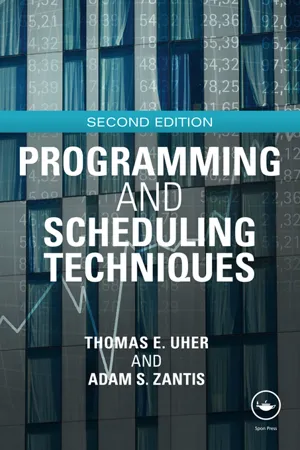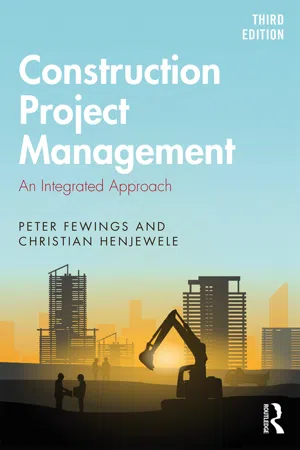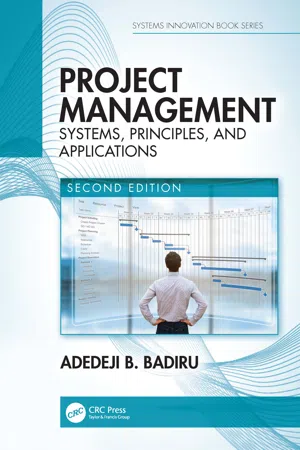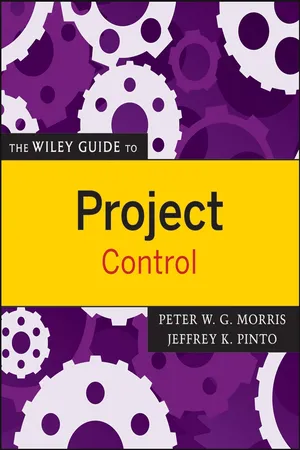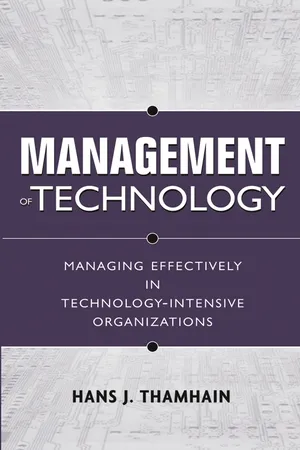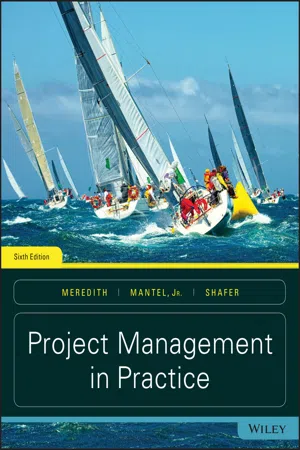Technology & Engineering
Project Control
Project control involves the monitoring, tracking, and regulating of a project's progress to ensure it stays on track with its objectives, budget, and timeline. It encompasses activities such as performance measurement, risk management, and change control to maintain the project's quality and efficiency. Effective project control is essential for successful project delivery in the technology and engineering sectors.
Written by Perlego with AI-assistance
Related key terms
Related key terms
1 of 4
Related key terms
1 of 3
12 Key excerpts on "Project Control"
- eBook - ePub
Mastering IT Project Management
Best Practices, Tools and Techniques
- Murali Chemuturi(Author)
- 2013(Publication Date)
- J. Ross Publishing(Publisher)
7 Project Control in IT Project Management IntroductionThe word “control” has a sinister connotation associated with it in the general public. The epithet “control freak” is hated and if it is attached to a manager, few subordinates may wish to work with that manager! However, in some environments and disciplines such as project management, the word “control” has a very positive connotation. In fact, control is an essential part of efficient and effective project management. For a project to be completed on time and within the approved budget, close control of project execution must be exercised. In the parlance of project management, the word “control” involves the following activities:- Planning activities based on approved organizational norms/baselines
- Measuring progress (schedule, quality, productivity, and cost) of the project periodically
- Comparing the actual progress with the planned progress and finding the variances
- Taking corrective actions for undesirable variances, if any
- Taking preventive actions to keep the actual progress aligned with planned progress in the future
- Schedule. This indicates the planned duration for each of the activities and consequently, the project completion date. We control project execution to align it with the planned dates for each of the activities so that the project can be completed on time.
- Cost. A budget is established upon project approval. Although the budget is not set in stone, we need to maintain control of the expenditures within the approved budget. It is possible that some activities may cost more and some less than the budgeted expenditure. Overall, we need to contain the project expenses within the budgeted expenditure.
- Quality.
- eBook - ePub
- Thomas Uher, Adam Zantis(Authors)
- 2012(Publication Date)
- Routledge(Publisher)
Chapter 6Project Control6.1 IntroductionProject Control is the third element in the functional chain of management after work has been planned and organised. It completes a closed circuit or loop that will enable the project manager to detect deviations from the plan that could be related to organisational or production problems, inefficient use of resources, or the uncertain nature of the work in question. The project manager will be able to take corrective action by adjusting the production process and/or improving the use of resources.In this chapter Project Control will be defined from the scheduling point of view and its importance explained. The emphasis will be on time and resource control and cost–time optimisation. A method for compressing or accelerating critical path schedules will be described and demonstrated. The technique of earned value, which is an effective method of controlling the progress and performance of projects, will be discussed later in the chapter.The main function of Project Control is to ensure successful attainment of the objectives that have been formulated in plans. Since plans are forecasts of future events, they are never truly accurate and the project manager must expect that deviations from the planned strategy will occur in the production process. An effective Project Control system will be able to detect any such deviations and will enable the project manager to formulate and implement remedial strategies.6.2 Project Performance OutcomesProject objectives defined in the planning stage impose specific performance outcomes that a project is expected to attain. These are usually related to time, cost and quality performance. Project Control thus aims at defining performance outcomes and setting up a mechanism for their achievement.Depending on the type and nature of a project, a control system may include additional performance factors such as control of change orders, production of documentation, and control of safety. Time progress control and resource productivity control factors will be the main focus of discussion in this chapter. - eBook - ePub
Construction Project Management
An Integrated Approach
- Peter Fewings, Christian Henjewele(Authors)
- 2019(Publication Date)
- Routledge(Publisher)
master plan , which integrates the risks that can impact control of the project from inception to handover. Critically, control systems need to be chosen that are integrated between design and construction because this approach inspires client confidence regarding the quality of the final product and its meeting of the target objectives.Definition and contextProject strategy may be defined as ‘the route to get to where we have determined to go’. Strategy also concerns the organisation of people and tasks. It follows feasibility and runs alongside design. Project planning is the process of defining, quantifying, costing and timing project activities and defining project achievements (events or deliverables), risks and standards; for example, a time or cost schedule, a cost plan, a risk strategy, a quality plan or a health and safety plan. Project Control is the process of adjusting progress to maintain the plan or schedule.Planning and control takes into account people, tasks and resources. Project managers need to place equal emphasis on all three and thus must consider:• For people – who is responsible, how shall we communicate and achieve standards consistently? • For tasks – what activities are needed and how shall they be completed within time, cost and quality constraints? • For resources – how to procure them effectively and efficiently?The project manager also has to ensure that the objectives prioritised by the client are met in a safe, sustainable and orderly way. Progress should be reported in a way that promotes consistency and confidence. Planning and control needs to respond to external pressures, which are often less predictable. Thus, planning and control is an open system view that heeds: - eBook - ePub
Project Management
Systems, Principles, and Applications, Second Edition
- Adedeji B. Badiru(Author)
- 2019(Publication Date)
- CRC Press(Publisher)
6Project Control System
If everything seems under control, you’re just not going fast enough. Mario AndrettiElements of Project Control
Everything needs control. Every project needs some aspect of control, whether relating to human resources, operating procedure, tools of operation, or work process. If the project moves along, as it should, it needs control either to keep performance on track or to correct unacceptable developments. Project Control can be achieved through a combination of quantitative and qualitative tools. Computational and graphical techniques that are developed for other uses can be adopted and adapted for applications in Project Control. A Project Control system represents a collection of factors and their interrelationships affecting the performance of a project. This chapter presents some approaches to project monitoring and control. The steps required to carry out Project Control are discussed. Schedule control through progress review is presented. Guidelines for performance control are developed. Project information systems needed for control are discussed. An approach to terminating projects as a managerial control is also discussed in this chapter.The three factors (time, budget, and performance) that form the basis for the operating characteristics of a project also help determine the basis for Project Control. Project Control is the process of reducing the deviation between actual performance and planned performance. To control a project, we must be able to measure performance. The ability to measure accurately is a critical aspect of control. Measurements are taken on each of the three components of project constraints: time, performance, and cost. These constraints are often encountered in conflicting terms, and they cannot be fully satisfied simultaneously. The conflicting nature of the three constraints on a project is represented in Figure 6.1 .The higher the desired performance, the more time and resources (cost) will be required. It will be necessary to compromise one constraint in favor of another. There are some projects where performance is the sole focus. Time and cost may be of secondary importance in such projects. In other projects, cost reduction may be the main goal. Performance and time may be sacrificed to some extent in such projects. And, there are projects where schedule compression (time) is the ultimate goal. The specific nature of a project will determine which constraints must be satisfied and which can be sacrificed. - eBook - ePub
- Joseph Phillips(Author)
- 2011(Publication Date)
- AMACOM(Publisher)
A well-controlled project is a project that uses a well-defined project management framework. The project manager and his business have established policies for gathering requirements, communicating project information, completing the project work, and generally showing how the project should unfold from initiation to closing. A well-controlled project is orderly and is led by a project manager who has the logistical and organizational skills to measure, communicate, and anticipate the progress of the project. Project Control centers on the project manager, as she is the intermediary between the business owner, the project team, and the project customer. When things are out of control, the project manager is often the culprit.Controlling the project is about delivering exactly what was promised and protecting the profits that the project is intended to generate for the business. Project Control actually begins as soon as the project is launched; clear, well-written, and agreed-upon requirements are essential for a project that’s swiftly executed, well controlled, and accepted by the project customer.When the project requirements are loosely defined or described with subjective terms like fast , good , and reliable , and when there are conflicting objectives, the project is destined to have control issues. Projects with clearly defined objectives can also be plagued with control problems. Well-written requirements are just the starting point in Project Control; the project manager must take charge, lead the team, manage the work, and inspect the deliverables for confirmation of quality and exactness of execution.While controlling the project often focuses on controlling the project scope, which means protecting it from changes, Project Control is more than just scope management. The project costs and schedule must also be protected from change, and this means constant monitoring of performance. In addition to costs and schedules, the project manager needs to control and manage the project team and the communications among team members. Finally, an overarching theme of control is to define, deliver, and ensure quality throughout all areas of the project.Protecting the Project Scope from Changes
The project scope is everything that the project must create in order to declare the project completed. The creations of the project work are the actual built, delivered, and completed project requirements for the project customer—they are what the customer has hired you to do for him. Because every project is different, what your company creates for your customers is entirely different from what my company creates for my customers. However, while our projects may be different, the concept of the project scope is the same; the fulfillment of the project scope equates to a completed project, and completed projects equate to profits for your company. If the project scope is not controlled, then your profits are jeopardized. - eBook - ePub
Managing Technology-Based Projects
Tools, Techniques, People and Business Processes
- Hans J. Thamhain(Author)
- 2014(Publication Date)
- Wiley(Publisher)
- Driven by business pressures and advances in information technology, many companies have invested heavily in new management tools and techniques, promising more effective alternatives and enhancements to traditional forms of Project Control.
- One of the greatest challenges for management is to seek out tools and techniques that meet the three key conditions: (1) compatible with the business environment, processes, culture and values, (2) conducive to specific problem solving, and (3) useful for tackling and controlling the project according to established plans.
- Project Control has radically departed from its narrow focus of satisfying schedule and budget constraints, shifting to a much broader and more balanced managerial approach that focuses on the effective search for solutions to complex problems.
- Project management tools are underutilized because of insufficient familiarity on the part of project leaders.
- Project Control must be congruent with the business process and the human side of management to work effectively.
- Field research consistently emphasizes the importance of organizational and cultural factors for managerial control, including mutual trust, respect, candor, risk sharing, and the ability to fail safely.
- Self-forcing or self-directed control uses work challenge, personal pride, and commitment as motivators for team self-governance and accountability.
- Project Control requires work processes with effective communication channels and cross-functional linkages, interconnecting people, activities, and support functions.
- Few companies go into a major restructuring of their business processes lightly. At best, the introduction of a new Project Control technique is painful, costly, and disruptive to ongoing operations. At worst, it can destroy existing managerial controls.
- eBook - ePub
- Peter W. G. Morris, Jeffrey K. Pinto(Authors)
- 2010(Publication Date)
- Wiley(Publisher)
CHAPTER ONEProject ControlPeter HarpumProject control is about ensuring that the project delivers what it is set up to deliver. Fundamentally, the process of Project Control deals with ensuring that other project processes are operating properly. It is these other processes that will deliver the project’s products, which in turn will create the change desired by the project’s sponsor. This chapter provides an overview of the Project Control processes, in order to provide the conceptual framework for the rest of this section of the book.Introduction
Control is fundamental to all management endeavor. To manage implies that control must be exercised. Peter Checkland connects the two concepts as follows:The management process. . .is concerned with deciding to do or not to do something, with planning, with alternatives, with monitoring performance, with collaborating with other people or achieving ends through others; it is the process of taking decisions in social systems in the face of problems which may not be self generated.Checkland, 1981In short to• plan • monitor • take actionOne may ask what is the difference between Project Control and any other type of management control? Fundamentally there is little that project managers must do to control their work that a line manager does not do. Managers of lines and projects are both concerned with planning work; ensuring it is carried out effectively (the output from the work “does the job”) and efficiently (the work is carried out at minimum effort and cost). Ultimately, managers of lines and projects are concerned with delivering what the customer wants. The line management function is usually focussed on maximizing the efficiency of an existing set of processes—by gradual and incremental change—for as long as the processes are needed. The objective of operations management (or “business-as-usual”) is rarely to create change of significant magnitude. Projects, on the other hand, are trying to reach a predefined end state that is different to the state of affairs currently existing; projects exist to create change. Because of this, projects are almost always time-bound. Hence, the significant difference is not in control per se, but in the processes that are being controlled—and in the focus of that control. - eBook - ePub
Management of Technology
Managing Effectively in Technology-Intensive Organizations
- Hans J. Thamhain(Author)
- 2015(Publication Date)
- Wiley(Publisher)
All of this has a profound impact on the way that project leaders must manage toward desired results. The methods of communication, decision making, soliciting commitment, and risk sharing are shifting constantly away from a centralized, autocratic management style to a team-centered, more self-directed form of Project Control. Equally important, Project Control has radically departed from its narrow focus on satisfying schedule and budget constraints to a much broader and more balanced managerial approach, which focuses on the effective search for solutions to complex problems, as reflected by the performance metrics in Table 7.4. This requires trade-offs among many parameters, such as creativity, change-orientation, quality, and traditional schedule and budget constraints. Control also requires accountability and commitment from the team members toward the project objectives. Table 7.4a Analytical Management Techniques for Project Control Analytical Management Technique Description Elements of Control Conditions for Successful Control Action Item/Report A memo or report defining specific action items agreed upon with the resolver, necessary to move the project forward or to correct a deficiency. Responsibility identficat'n, personal commitment, peer pressure. Individual commitment, management support, and incentives. Computer Software Computer software to support project planning, tracking and control. Provides various reports of project status and performance analysis, and documentation. Schedule, budget, pert/cpm, resource leveling scheduling, $-t trade-off. Ability to measure status. Valid input data. Willingness to correct deviations. Leadership. Critical Path Analysis Analysis of the longest paths within a network schedule with the objective of (1) determining the impact of task delays, problems, contingencies, and organizational dependencies, (2) finding solutions, and (3) optimizing schedule performance. Schedule, budget, deliverables - eBook - ePub
Macroproject Development in the Third World
An Analysis Of Transnational Partnerships
- Kathleen J. Murphy(Author)
- 2019(Publication Date)
- Routledge(Publisher)
6 Effective Project ControlThe real opportunity for macroproject sponsors to influence the success or failure of their projects lies in preserving their overall integrity throughout the development phase — that is, in faithfully implementing the project according to the original definition as conceived in the early planning, feasibility and engineering phases. Since enormous volumes of capital and resources are expended during the construction phase, maximizing efficiencies at that critical period, in particular, can make the difference between loss or profit to the sponsors. The challenge lies in ushering the project swiftly and surely through the engineering, procurement, construction, and startup phases with minimal budget and schedule deviations.Not every project requires a project manager. A project warrants such a lead decision-maker — that is, an active capability to make timely trade-off decisions — when it is highly complex, whether in a technological, political, logistical, or financial sense. The project manager conveys pertinent status information and trade-off options to onsite and headquarters managers, owners and other interested officials on a routine basis. He interprets the numerous computer outputs and statistical analyses to identify signals of impending trouble. An effective project management capability serves the function of providing an "early-warning" system. The project manager makes the necessary compromises and adjustments as soon as possible to minimize the time and cost impact of the trouble on the project.Project management expertise may be provided by any of a number of qualified sources including the owners themselves, or international design/construct firms. Services retained from international firms are usually reimbursed on a cost-plus-fee contractual basis. The project management contractor (PMC) is normally selected because of the sophistication of his tracking systems, his relevant experience in installing the particular technology, and/or his proven record in dealing with projects of a similar level of complexity. Previous experience in the country can also be enormously valuable. - eBook - ePub
- Jack R. Meredith, Scott M. Shafer, Samuel J. Mantel, Jr., Margaret M. Sutton(Authors)
- 2016(Publication Date)
- Wiley(Publisher)
Managing a project involves continually planning what to do, checking on progress, comparing progress to plan, taking corrective action to bring progress into agreement with the plan if it is not, and replanning when needed. As noted previously, the fundamental items to be planned, monitored, and controlled are time, cost, and scope so that the project stays on schedule, does not exceed its budget, and meets its specifications.This plan‐monitor‐control cycle constitutes a “closed‐loop” process that continues until the project is completed. Figure 7‐1 ,* illustrates the information and authority flows for such a cycle in an engineering project. Note that the information flows up the organization and the authority flows down.Figure 7‐1 Project authorization and expenditure control system information flow.Source: Dean, 1968.Unfortunately, it is often the case that when particularly complex, challenging, or uncertain projects are initiated, the planning‐monitoring‐controlling effort is minimized so that “the real work” can be done. It is a great temptation to focus on doing something, anything, rather than to spend time on planning, monitoring, and controlling, especially if the stakes are high and the project is a difficult one. It is precisely such projects, however, that most desperately need a mature project manager, particularly one who realizes the importance of creating an effective planning‐monitoring‐controlling process. Only this will ensure that the project and its output are in full compliance with the law, as well as with the expectations of both senior management and the client.We are familiar with many firms that incurred tremendous expense and large losses because the planning process was inadequate for the project tasks undertaken. For example, a retailer won a bid to supply a regional office of a national firm with a computer, terminals, and software. Due to insufficient planning, the installation was completed far beyond the due date with very inadequate performance. The project failure disqualified the retailer from bidding on an additional 20 installations planned by the national firm. Another firm in the construction industry ran 63 percent over budget and 48 percent over schedule on a major project because the PM had managed similar projects several times before and “knew what to do without going into all that detail that no one looks at anyway.” - eBook - ePub
Project Control Methods and Best Practices
Achieving Project Success
- Yakubu Olawale(Author)
- 2022(Publication Date)
- Business Expert Press(Publisher)
The governance approach for accepting changes in projects should be structured and robust to achieve an effective Project Control. Therefore, the evaluation, approval, rejection, or deferment of scope change requests should be carried out in accordance with the agreed governance regime of an organization, for example, the delegated authority matrix. The practice in most projects is to send the design or scope change request to a change control board or panel for approval. As a minimum, the cost, schedule, technical, and quality impact should be assessed in a robust way and attached to change control requests. The change control board or panel should be made up of people with good authority in the business with the right balance of skills and experience. This will enable them to make the right decisions about the change request that do not threaten the ongoing viability of the project’s business case, associated benefits, and is congruent with the project’s objectives and the organization’s strategy.Passage contains an image CHAPTER 10 Risk Management Introduction
This chapter provides an overview of risk management, which was identified by the PCIM Project Control methodology research as the second most common factor that can inhibit effective cost and time control. Risk management is an inseparable and integral part of project management and critical for driving a project successfully. In fact, one of the benefits of applying Project Controls to a project is to unearth emerging risks to the cost and time performance of projects for corrective actions to be taken as appropriate. Risk management is also important for Project Control because during project delivery, risk analysis can be used to give probabilistic forecasts that provide levels of confidence in meeting the budget and schedule objectives using past project performance, which takes account of future risks and uncertainties in relation to the project.Project Risks and Categorization of RisksRisk is an uncertain event or set of circumstances that, should it occur, will influence the achievement of the project’s objectives. It is the combination of the probability of an event and its consequence. Risks can be categorized according to their visibility or their origin. - eBook - ePub
- Tom Kendrick(Author)
- 2012(Publication Date)
- AMACOM(Publisher)
CHAPTER 8 Tracking and Monitoring for Project ControlMOST STATUS CYCLESbring at least some unwelcome news. Sorting out the problematic from the merely annoying is the first step in maintaining overall control. Seeking ways to adapt or shift the plan to deal with bad news means recovering from problems, not succumbing to them. To do this you need to have a full complement of techniques for control of schedule, cost, quality, and other potential problems. Managing scope changes is essential to Project Control, as are dealing with individual performance problems, managing issues, and monitoring risks. To control long-duration projects and programs, you need to rely on periodic project reviews to ensure that the objectives continue to make good business sense and to make needed plan adjustments. On occasion, control actions also may require, as a last resort, canceling the project.Scope and Specification Change Management
Project Control depends heavily on scrupulously managing scope for your deliverables. Failing to control scope is about the most common reason projects fail to achieve their objectives. When scope is allowed to meander, the results aren’t good. The old adages are true:• Projects quickly get to 80 percent complete, then stay there forever. • The first 90 percent of a project takes 90 percent of the time. The remaining 10 percent takes the other 90 percent.This performance is not due to laziness or stupidity. It results from unconstrained scope change. When the rate of specification change exceeds your rate of progress, you can never reach your moving target. Nailing down project scope relies on freezing your scope when you set the project baseline, as discussed in Chapter 6 . Avoiding unnecessary changes through the remainder of the project requires an effective process for managing proposed scope changes that empowers you to say no most of the time. Even on agile projects, scope is fixed for the current development iteration, and it is specified in detail for subsequent cycles. Changes on agile projects, although expected, must always be justified based on value. Although specifics of the change process vary with the specific project, for overall control it needs to operate much like the general change control process described in Chapter 2
Index pages curate the most relevant extracts from our library of academic textbooks. They’ve been created using an in-house natural language model (NLM), each adding context and meaning to key research topics.
Explore more topic indexes
Explore more topic indexes
1 of 6
Explore more topic indexes
1 of 4

